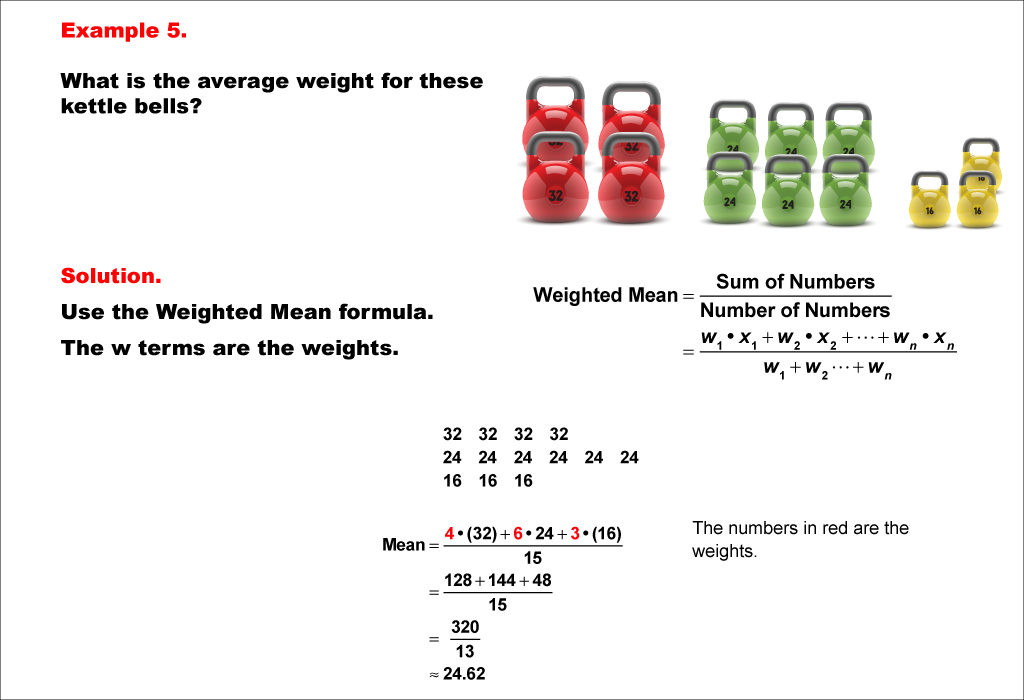
Display Title
Math Example--Measures of Central Tendency--Weighted Mean--Example 5
Display Title
Math Example--Measures of Central Tendency--Weighted Mean--Example 5

Topic
Measures of Central Tendency
Description
This example demonstrates the calculation of a weighted mean in a real-world context, using kettlebells of different weights: 32, 24, and 16 pounds, with quantities of 4, 6, and 3 respectively. The weighted mean is computed using the formula: (4 * 32 + 6 * 24 + 3 * 16) / (4 + 6 + 3), resulting in an average weight of 24.62 pounds.
Weighted mean is an important concept in measures of central tendency, allowing for the consideration of the relative frequency or quantity of each data point. This collection of examples helps teach this topic by providing practical scenarios, such as calculating the average weight of kettlebells, enabling students to understand the application of the weighted mean formula in tangible, real-world contexts.
Exposure to multiple worked-out examples, especially those with practical applications, is crucial for students to fully grasp the concept of weighted mean. By seeing the formula applied to diverse situations, students can develop a deeper understanding of how weights affect the final average and how to interpret the results in everyday scenarios they might encounter.
Teacher's Script: Let's look at this real-world example of calculating a weighted mean using kettlebells. How does this differ from our previous examples? Can you think of other situations where we might need to calculate an average weight or size of objects when we have different quantities of each?
For a complete collection of math examples related to Measures of Central Tendency click on this link: Math Examples: Measures of Central Tendency: Weighted Mean Collection.
| Common Core Standards | CCSS.MATH.CONTENT.6.SP.B.5.C |
|---|---|
| Grade Range | 6 - 8 |
| Curriculum Nodes |
Algebra • Probability and Data Analysis • Data Analysis |
| Copyright Year | 2021 |
| Keywords | mean, measures of central tendency |